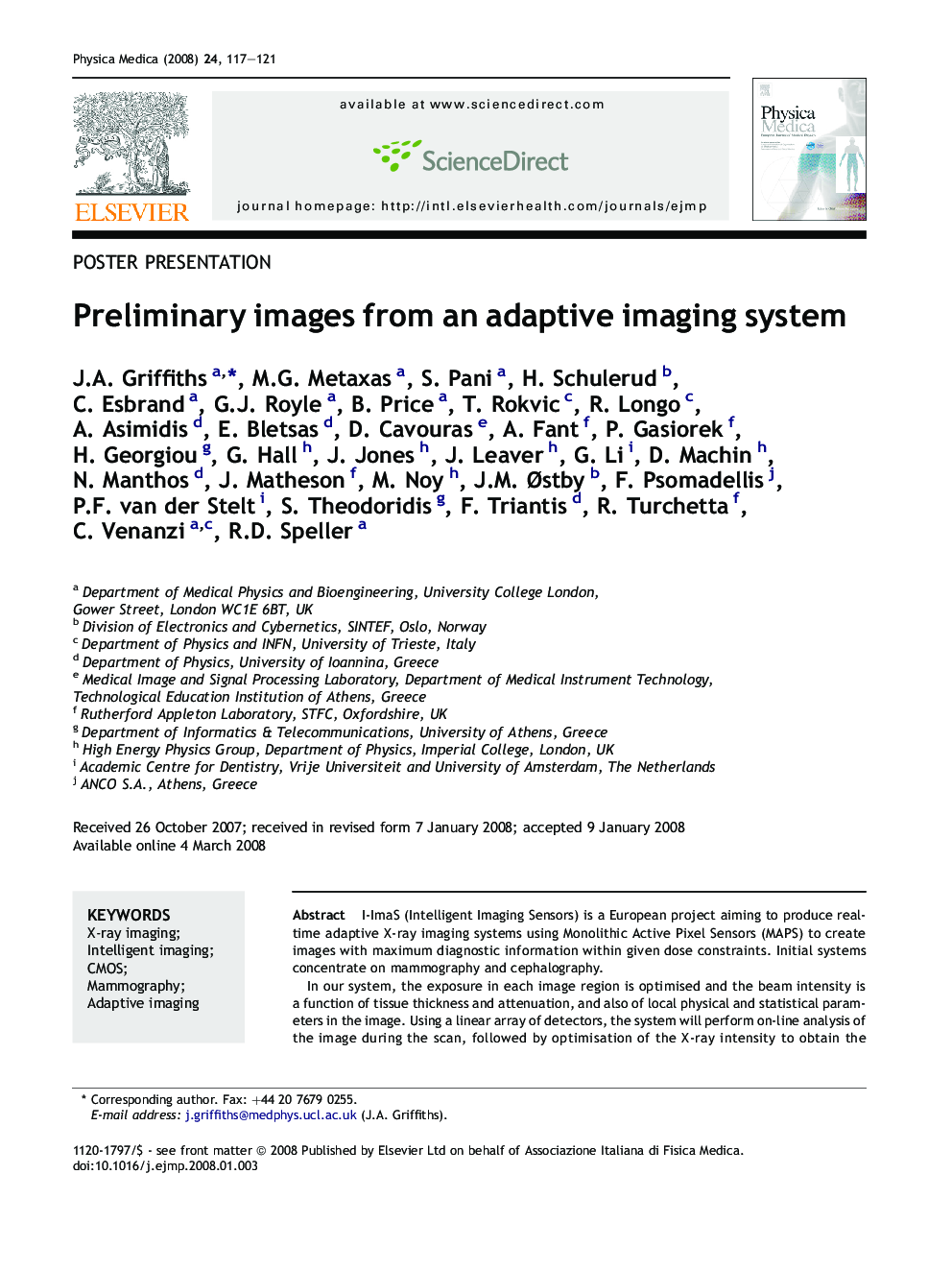| Article ID | Journal | Published Year | Pages | File Type |
|---|---|---|---|---|
| 1881066 | Physica Medica | 2008 | 5 Pages |
I-ImaS (Intelligent Imaging Sensors) is a European project aiming to produce real-time adaptive X-ray imaging systems using Monolithic Active Pixel Sensors (MAPS) to create images with maximum diagnostic information within given dose constraints. Initial systems concentrate on mammography and cephalography.In our system, the exposure in each image region is optimised and the beam intensity is a function of tissue thickness and attenuation, and also of local physical and statistical parameters in the image. Using a linear array of detectors, the system will perform on-line analysis of the image during the scan, followed by optimisation of the X-ray intensity to obtain the maximum diagnostic information from the region of interest while minimising exposure of diagnostically less important regions.This paper presents preliminary images obtained with a small area CMOS detector developed for this application. Wedge systems were used to modulate the beam intensity during breast and dental imaging using suitable X-ray spectra. The sensitive imaging area of the sensor is 512 × 32 pixels 32 × 32 μm2 in size. The sensors' X-ray sensitivity was increased by coupling to a structured CsI(Tl) scintillator. In order to develop the I-ImaS prototype, the on-line data analysis and data acquisition control are based on custom-developed electronics using multiple FPGAs.Images of both breast tissues and jaw samples were acquired and different exposure optimisation algorithms applied. Results are very promising since the average dose has been reduced to around 60% of the dose delivered by conventional imaging systems without decrease in the visibility of details.
